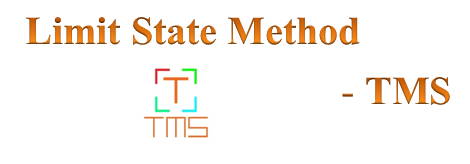Evolution of Limit State Method:
In order to safeguard against the risk of failure (collapse
or unserviceability), safety margins are normally provided in the design. In
the previous designs, these safety margins were assigned (in terms of
‘permissible stresses’ in Working Stress Method and ‘load factors’ in the
Ultimate Load Design) primarily on the basis of past experience and engineering
judgment. Structures designed according to these methods were found, in
general, to be safe and reliable. However, the safety margins provided in these
methods lacked scientific basis. Hence, reliability based design methods were
developed with the objective of obtaining rational solutions, which provide
adequate safety.
The variables such as loads, material strength and member
dimensions are subject to varying degree of uncertainty and randomness. The
deviations in the dimensions of members or strength of material, even though
within acceptable tolerance, can result in a member having less account the
possibility of overload or under strength. Further some idealization and
simplifying assumptions are often used in the theories of structural analysis
and design. There are also several unforeseen factors that influence the
prediction methods, workmanship and quality control, intended service life of
the structure, human errors, possible future change of use, and frequency of
loading. These uncertainties make it difficult for the designer to guarantee
the absolute safety of the structure. Hence, in order to provide reliable
safety of the structure. Hence, in orfer to provide safety margins, the design
must be based on the probabilistic methods of design.
Limit State Method:
Limit state
method of design is a further improvement of ultimate load design. In the limit
state method, a structure is designed to withstand all loads likely to act on
it in the duration of its life span and also to satisfy the serviceability
requirements before failure can occur. The design provides a condition that the
structure will not become unfit for use which it is meant or in other words the
structure will not reach a limit state.
It is purely a strain theory (Saint Venant’s theory). The
limit state method of designing structure based on a statistical concept of
safety and the associated statistical probability of serviceability. This
method of design for a structure must ensure an acceptable probability that the
structure during its life will not become unfit for its intended use.
The limit state for Reinforced Concrete are normally
grouped into three types, namely
1)
Ultimate limit states
2)
Serviceability limit states
3)
Special limit states
Ultimate limit states:
The ultimate (safety) limit states, which corresponds to
the maximum load carrying capacity and are concentrated with
(a)
Loss of equilibrium (collapse) of a part
or the whole structure when considered as a rigid body.
(b)
Progressive collapse.
(c)
Transformation of the structure into a
plastic mechanism collapse.
(d)
Rupture of critical sections due to the
stress exceeding material strength (in some cases reduced by repeated loading)
or by deformations.
(e)
Loss of stability (buckling, overturning,
or sliding).
(f)
Fracture due to fatigue.
Serviceability limit states:
The serviceability limit states, which deals with the
discomfort to occupancy and malfunction, caused by excessive deflection, excessive
crack width, undesirable vibration (e.g. wind induced oscillations, floor
vibrations), and so forth.
Special limit states:
The special limit states, which deal with the abnormal
conditions or abnormal loading such as damage or collapse in extreme earthquakes,
damage due to fire, explosions, or vehicle collisions, damage due to corrosion
or deterioration (and subsequent loss of durability), elastic, plastic, or
creep deformation, or cracking leading to a change of geometry, which
necessitates the replacement of the structure.
Follow me on:
1. youtube
2. Google+
3. Twitter
4. Instagram
6. Blogspot








